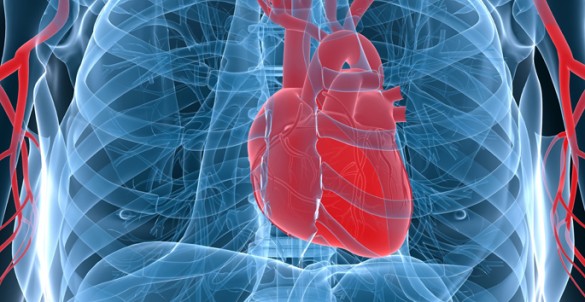
In observance of Heart Month in February, Vanderbilt health educator Stacey Kendrick has compiled a list of steps everyone can take for a healthier heart.
- Be heart smart by limiting your intake of saturated and trans fats. The Dietary Guidelines for Americans recommend that no more than 10 percent of our daily calories contain saturated fat and to try to take in as little trans fat as possible. Reduce your saturated and trans fat intake by choosing lean meats such as chicken breast, pork tenderloin and fish, as well as reduced or fat-free dairy products. Avoid processed foods and baked goods, which tend to contain a lot of trans fats.
- Being at a healthy weight is important because obesity increases the risk of coronary heart disease. Instead of going on a diet, think about making healthy changes in the way you live. Take small steps, including being active each day and eating plenty of fruits and vegetables. Even a 5 to 10 percent weight loss can lead to a heart healthier you.
- Whether cooking or making salad dressings, use oils that are lowest in saturated fats, trans fats and cholesterol – such as canola oil, corn oil, olive oil, safflower oil, sesame oil, soybean oil and sunflower oil. Be sure to use them sparingly, because they contain 120 calories per tablespoon. Include a squeeze of lemon juice for a flavorful addition without added calories or fat.
- Don’t feel guilty over a piece of chocolate. Chocolate has gotten lots of media attention recently as a result of the presence of plant-based nutrients called flavonoids. Found in chocolate, red wine and coffee, these powerhouses have potential influences on vascular health, such as lowering blood pressure, improving blood flow to the brain and heart, and making blood platelets less sticky and able to clot. Aim for a moderate 1-ounce portion of dark chocolate and stay away from choices containing added caramel, marshmallow or other ingredients that make it less than heart smart.
- Eating at home instead of dining out is a great way to eat a more heart healthy diet because you can have more control over how food is prepared. Try altering preparations such as baking instead of frying, using herbs instead of salt for a flavor boost and adding low-fat instead of full-fat cheese.
- It is recommended that you get 150 minutes of moderate intensity aerobic activity each week, or 30 minutes a day. But, committing that time is a challenge for many busy people. Instead, aim for three 10-minute bouts of activity each day, which is proven to be just as effective. Take a brisk walk before work or during a lunch break, walk in the mall or take the stairs. It all adds up.
- Too much salt can raise blood pressure, leading to an increased risk for heart disease. The American Heart Association guideline for salt intake is 1,500 milligrams per day. Rinsing canned foods such as vegetables, tuna and beans with water can reduce the sodium by up to 40 percent.
- According to the American Heart Association, adopting a more physically active lifestyle can be just as effective as some antihypertensive medications. Physical activity can also boost your levels of HDL (good) cholesterol and keep weight in the recommended range. Aim for 30 minutes or more of moderate intensity aerobic activity each day.
- Starting a regular physical activity program is a great way to reduce your risk for heart disease and stroke. If you have been inactive for a long time or have a chronic health condition be sure to check with your health care provider first. Then, find an activity you enjoy doing. You will be more likely to stick with it long term. Gardening, walking, dancing and swimming are all great options. Start slow and build up over time.















